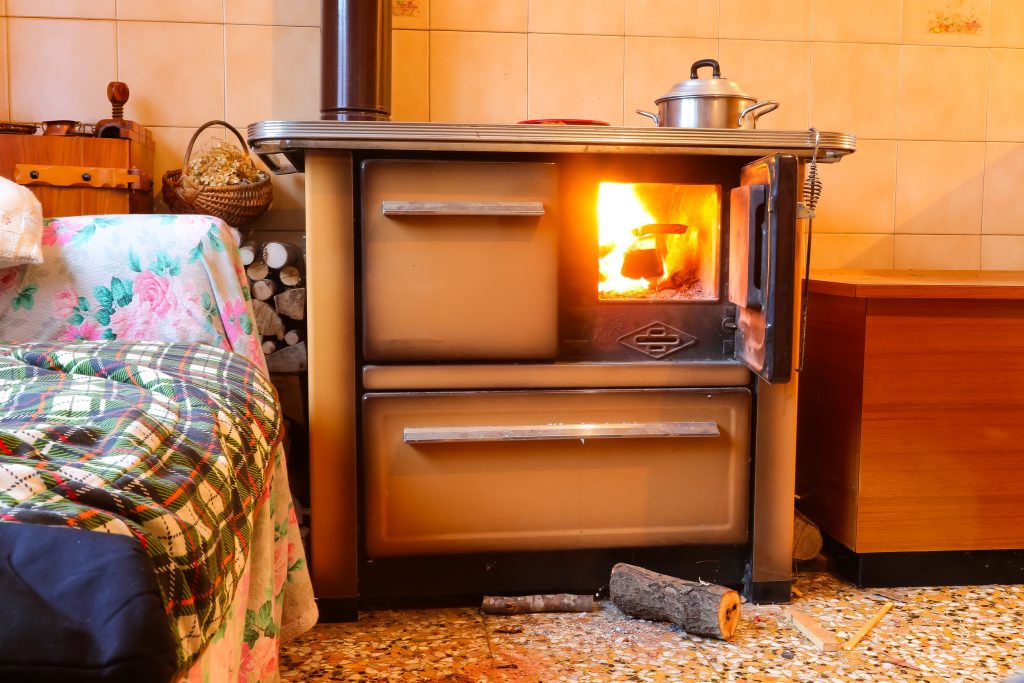
That feeling of security your homeowner’s policy provides is invaluable, but it might be built on a shakier foundation than you realize. You diligently pay your premiums, trusting you’re covered for the unexpected. However, certain outdated items lurking within your walls and on your property can be seen by insurers as unacceptable risks. When a disaster strikes, discovering that your coverage is void because of a forgotten, obsolete feature is a nightmare scenario. This guide will reveal the common household items that could jeopardize your entire home insurance policy.
1. Obsolete Knob-and-Tube Wiring
Found in homes built before 1950, knob-and-tube wiring is an immediate red flag for insurers. This early form of electrical wiring uses ceramic knobs and tubes for insulation, which becomes brittle and unsafe over time. The system is also ungrounded, increasing the risk of electrical shock and fire, and it cannot handle the electrical demands of modern appliances. Many companies will refuse to write a new home insurance policy for a house with K&T wiring. If a fire is traced back to this obsolete system, your provider has strong grounds to deny the claim entirely.
2. Antiquated Electrical Fuse Boxes
Modern homes use circuit breakers that trip to cut power during an overload; many older homes still rely on fuse boxes. These systems were not designed to support the number of electronics and appliances we use today. Homeowners sometimes dangerously install oversized fuses to prevent them from blowing, creating a severe fire hazard. Insurers are well aware of this risk and may charge higher premiums or require an upgrade to a breaker panel. If a fire starts due to an overloaded fuse box, your home insurance claim is at high risk of being denied.
3. Corroding Galvanized Steel Pipes
If your home was built before the 1960s, it might have galvanized steel pipes for its plumbing. These pipes are coated with zinc, which erodes over decades, leading to internal corrosion and rust buildup. This not only affects water pressure and quality but also makes the pipes prone to leaks and sudden bursts. Because this is a known, gradual problem, many insurers consider it a maintenance issue, not a sudden and accidental event. Consequently, water damage claims resulting from the failure of old, corroded galvanized pipes are frequently rejected.
4. Uncertified Wood-Burning Stoves

A cozy wood-burning stove can quickly turn into a massive liability if it’s an older or improperly installed model. Insurance companies have strict requirements for solid fuel heating systems, demanding they be professionally installed and certified by a recognized authority like Underwriters Laboratories (UL). These stoves require specific clearances from combustible materials and regular professional inspections. Using an old, uncertified stove without informing your insurer can immediately void your coverage for any related fire. It represents an undisclosed risk that your provider did not agree to cover.
5. An Aged, Deteriorating Roof
Your roof is the single most important barrier protecting your home from the elements. Most insurers consider a roof’s lifespan to be around 20-25 years, depending on the material. If your roof is older than that and shows visible signs of wear like curling shingles or missing granules, your coverage could be in jeopardy. An insurer may argue that you failed to properly maintain the property, leading to the damage. They might deny a claim for a roof leak or interior water damage, attributing it to negligence rather than a covered peril like a storm.
6. Risky Aluminum Wiring
Commonly used for a decade between the mid-1960s and mid-1970s, solid aluminum wiring is another major concern for insurers. Aluminum is softer than copper and oxidizes at connection points, which can lead to overheating and create a serious fire hazard. While it isn’t illegal, many companies will not insure a home with aluminum wiring unless it has been remediated by an electrician. This involves adding copper “pigtails” to every connection point to ensure a safe, secure fit. Without this professional fix, a fire originating at a connection point is unlikely to be covered.
7. Abandoned Underground Oil Tanks
Many older homes were once heated with oil stored in underground tanks on the property. If this tank was never properly decommissioned, it poses a significant environmental and financial threat. These steel tanks can corrode and leak oil into the soil and groundwater, leading to cleanup costs that can reach hundreds of thousands of dollars. Standard home insurance policies explicitly exclude coverage for fuel spills and environmental contamination. The presence of an old, unmaintained tank is a liability so great that it can make your property uninsurable.
8. Old Appliances with Frayed Cords
That old refrigerator in the garage or the vintage lamp you love could be a disaster waiting to happen. The electrical cords on older appliances can become brittle and frayed over time, exposing live wires. This creates a high risk for both electrical shock and house fires, which are among the most common insurance claims. If investigators determine that a fire was caused by a faulty and clearly deteriorated appliance cord, your insurer could deny the claim. They will argue that using the appliance in that condition constituted a preventable hazard.
9. Unpermitted Renovations
Did a previous owner finish the basement or add a bathroom without getting the proper permits? These unpermitted renovations are a huge red flag for insurance providers. The permitting process ensures that all work is done to code, meeting crucial safety standards for things like electrical, plumbing, and structural integrity. If a fire or major water leak originates from an area that was renovated without permits, your policy may be voided. Your insurer can state that the uninspected, non-compliant work created a risk they never agreed to cover.
10. Lack of Modern Safety Devices
While not an “outdated item” in the same way, the absence of modern safety devices is a critical issue. Most insurance companies offer discounts for centrally monitored smoke detectors, carbon monoxide alarms, and security systems. Conversely, some may deny a claim or reduce the payout if you failed to have even basic, functioning smoke detectors. In the tragic event of a fire, the lack of these simple, life-saving devices can be interpreted as negligence. Ensuring your home has working alarms is a small step that protects both your family and your policy.
Fortifying Your Financial Foundation
Your home is likely your most significant investment, and protecting it requires more than just paying a premium. It demands proactive maintenance and an awareness of the hidden risks that could undermine your financial safety net. These outdated items are not just potential maintenance headaches; they are known liabilities that insurance companies may refuse to cover. Taking the time to inspect your home and address these issues is the most effective way to ensure your home insurance will be there when you need it most.
Have you ever discovered an outdated feature in your home that concerned you? Share your story in the comments below!
Read More:
Living Alone? Security Experts Say to Turn Off This One Smart Home Setting Immediately
What Makes Guests Feel Uncomfortable in Your Home
The post 10 Outdated Household Items That Can Void Your Home Insurance appeared first on Budget and the Bees.







